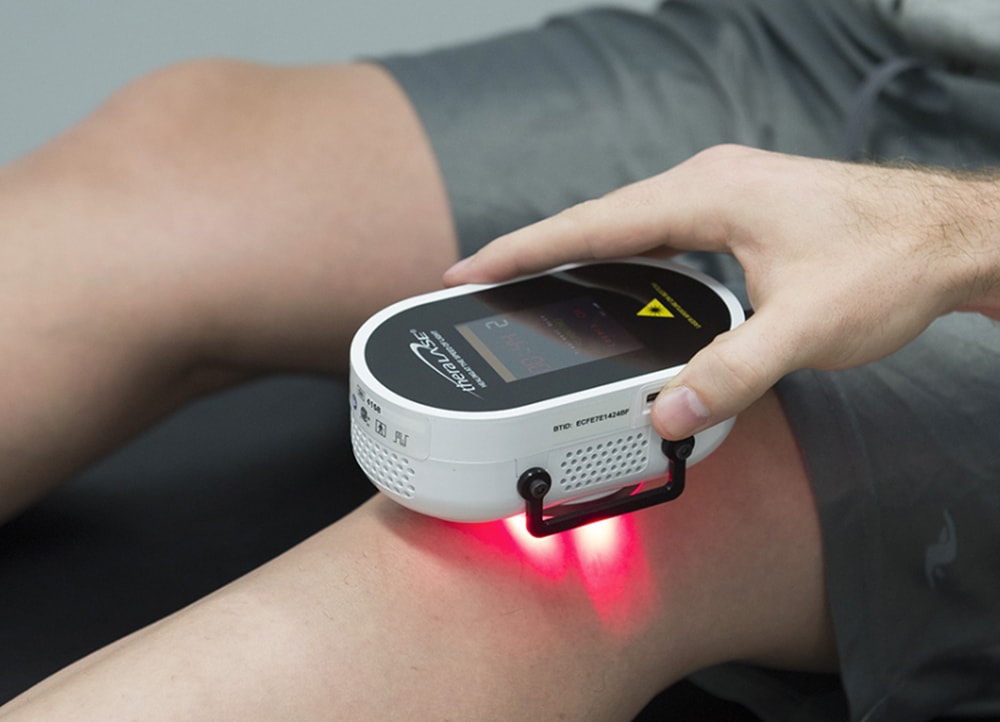Everything You Need to Know About Laser Therapy
Learn more about laser therapy to decide if it’s right for you.
Request AppointmentLearn more about laser therapy to decide if it’s right for you.
Request Appointment
More than ever, laser therapy is being used to reduce pain, heal wounds, and lessen inflammation related to many chronic pain conditions. Although thousands of doctors offer this cutting-edge treatment, you may not be familiar with the process or its effects. Learn more about laser therapy and find out whether or not it’s right for you.
If you’re looking for an alternative way to lessen chronic pain or wounds with minimal side effects, read on to learn more about low-level laser therapy (LLLT).
Laser therapy is a non-invasive, drug-free way to treat chronic pain and wounds. The United States Food & Drug Agency (FDA) categorizes laser treatments into three levels; surgical, non-surgical, and low-level. During low-level laser therapy procedures, the levels of light aren’t strong enough to heat body tissue. As such, it’s sometimes referred to as cold laser therapy.
LLLT uses targeted laser light to relieve pain, enhance cell function, and reduce inflammation. The treatment can penetrate soft tissues up to five inches deep. Focused, high bursts of energy ensure that therapy is delivered right where it’s needed.
Rather than masking a condition, LLLT interacts with damaged cells to stimulate the healing process, resulting in long-term effects. Recent clinical trials show that these treatments are particularly impactful for those with chronic elbow, wrist, and finger pain, as well as those with acute and chronic musculoskeletal disorders.
Cool lasers work by penetrating tissue with specific frequencies of light. Damaged cells absorb this light, which excites molecules and increases the production of adenosine triphosphate (ATP). ATP acts as a shuttle for energy between cells and allows them to begin stimulating one another to rebuild and heal the injured area.
In addition, the treatment stimulates circulation. Increased blood flow helps to reduce inflammation, bring oxygen to the tissue, and balances the immune system.
For most, the entire treatment only takes a few minutes. Each point is treated for 30-60 seconds. In simple cases, therapy can be administered on as little as one location, while complex situations may require as many as 10-15 points. The number of treatments needed will depend on how chronic and severe a medical condition is.
Many patients don’t feel anything during the treatment session. Since the laser doesn’t produce heat, there is no burning or warming from the device. However, increased blood flow to the area sometimes results in a tingling sensation.
Healing begins at the time of treatment and continues long after the session has ended. Some patients experience pain relief after the very first session. For severe or chronic conditions, it may take a few treatments to notice the effect of low-level laser therapy. Over time, treatments cumulatively become stronger and more permanent.
Patients suffering from chronic pain, including rheumatoid arthritis, carpal tunnel syndrome, fibromyalgia, neck pain, back pain, osteoarthritis, joint pain, and other chronic pain syndromes should consider LLLT. Laser therapy may also be used in dermatology as it is an effective treatment for wound healing, including diabetic ulcers, surgical wounds.
LLLT can help alleviate chronic pain and jumpstart the healing process. To determine whether or not LLLT is the right treatment option for you and your condition, consult with a trusted health care professional. To schedule a consultation to learn more about laser therapy in Indianapolis, IN, contact Supro Direct.
Required fields*